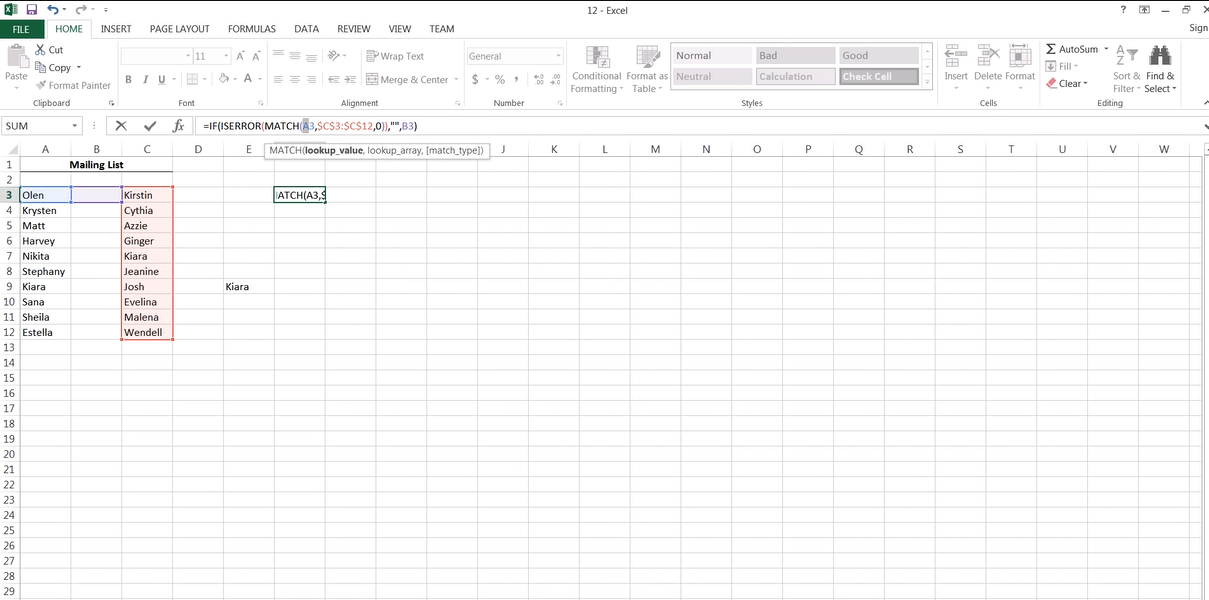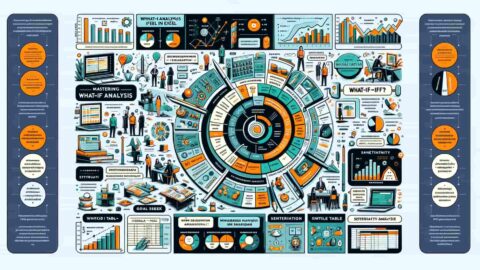How to compare 4 columns and find matches in excel? As professionals who work with data, we know the value of keeping our data organized and accurate. When working with large amounts of data in Excel, it can be challenging to ensure that all the data is correct and matches up. Fortunately, Excel provides a powerful feature that can help us compare and match columns quickly and accurately.
Table of Contents
In this comprehensive guide, we will explore how to compare and match columns in Excel. We will walk you through the steps needed to match columns in Excel, from simple matching to more complex matching scenarios.
Getting Started
Before we dive into the nitty-gritty details of matching columns in Excel, let’s take a moment to review some basic concepts. When we talk about “matching” columns in Excel, we compare two or more columns to find the matching or non-matching values.
For example, let’s say we have two columns, one containing a list of names and the other containing a list of phone numbers. We want to match the names in column A with the phone numbers in column B to ensure that all the phone numbers are correct and belong to the correct person.
To match columns in Excel, we use the “IF” function. The IF function is one of the most commonly used functions in Excel and is used to test a condition and return one value if the condition is true and another value if the condition is false.

Compare and Match Columns in Excel
Simple Column Matching
Let’s start with a simple column matching scenario. We have two columns, A and B, and we want to compare them to find the matching values. Here’s how we can do it:
- In cell C1, enter the following formula: =IF(A1=B1,A1,””)
- Copy the formula down to the rest of the cells in column C.
The formula in cell C1 compares the values in cells A1 and B1. If the values match, the formula returns the value in cell A1; otherwise, it returns an empty string. We copy the formula to the rest of the cells in column C to compare all the values in columns A and B.
Conditional Column Matching
Now let’s look at a more complex scenario where we want to match columns based on a condition. For example, we have two columns, A and B, and we want to match the values in column A with those in column B if the values in column A contain a certain string.
Here’s how we can do it:
- In cell C1, enter the following formula: =IF(ISNUMBER(SEARCH(“string”,A1)),B1,””)
- Copy the formula down to the rest of the cells in column C.
The formula in cell C1 checks if the value in cell A1 contains the string “string” using the SEARCH function. If the value contains the string, the formula returns the value in cell B1; otherwise, it returns an empty string. We copy the formula to the rest of the cells in column C to compare all the values in columns A and B based on the condition.
Matching Columns in Different Worksheets
Sometimes we must match columns in different worksheets in the same Excel file. Here’s how we can do it:
- In cell C1 of the first worksheet, enter the following formula: =VLOOKUP(A1,'[worksheet name]Sheet2′!A:B,2,FALSE)
- Copy the formula down to the rest of the cells in column C.
The formula in cell C1 uses the VLOOKUP function to search for the value in cell A1 in the first column of the second worksheet.
Compare 4 Columns In Excel and Find Matches
To compare 4 columns in Excel and find matches, you can use the following steps:
- Select the first empty cell in a new column (e.g., cell E1) where you want to display the comparison results.
- Enter the following formula in the cell:
=IF(AND(A1=B1,B1=C1,C1=D1),A1,””)
- Press enter to confirm the formula.
- Copy the formula down to the rest of the cells in the column by selecting the cell with the formula and dragging the fill handle (the small square in the bottom right corner of the cell) down to the last row that needs to be checked.
- The results will show in the column E, indicating a match between the data in columns A, B, C, and D. If there’s a match, the formula will return the value in column A. Otherwise, it will display an empty cell.
Note: If your data starts from a different row, you must adjust the formula’s cell references accordingly. For example, if your data starts from row 2, you would need to use the formula =IF(AND(A2=B2,B2=C2,C2=D2),A2,””) in cell E2.
How to Compare Two Columns In Excel and Count Matches
To compare two columns in Excel and count matches, you can use the following steps:
- Select an empty cell where you want to display the count of matches (e.g., cell C1).
- Enter the following formula in the cell:
=SUMPRODUCT(–(A1:A10=B1:B10))
- Replace “A1:A10” with the range of cells in the first column you want to compare and “B1:B10” with the range of cells in the second column you want to compare. Ensure the ranges have the same number of cells and are in the same order.
- Press enter to confirm the formula.
- The results will show in the cell C1, indicating the number of matches between the data in the two columns.
Note: If your data starts from a different row, you must adjust the formula’s cell references accordingly. For example, if your data starts from row 2, you must use the formula =SUMPRODUCT(–(A2:A11=B2:B11)) in cell C1. Also, use the double negative “–” before the comparison operator to convert the TRUE and FALSE values to 1s and 0s, which the SUMPRODUCT function can sum.
In conclusion, comparing and matching columns in Excel is a crucial skill for anyone who works with large sets of data. By using the formulas and techniques outlined in this tutorial, you can quickly identify matches between columns, saving you time and improving the accuracy of your work. Whether you need to compare just two or multiple columns, Excel provides powerful tools to make your work easier and more efficient. By mastering these techniques, you can become more productive and confident in your data analysis abilities, which can ultimately help you make better decisions and achieve better results. So why wait? Start comparing and matching your columns in Excel today!
Hello, I’m Cansu, a professional dedicated to creating Excel tutorials, specifically catering to the needs of B2B professionals. With a passion for data analysis and a deep understanding of Microsoft Excel, I have built a reputation for providing comprehensive and user-friendly tutorials that empower businesses to harness the full potential of this powerful software.
I have always been fascinated by the intricate world of numbers and the ability of Excel to transform raw data into meaningful insights. Throughout my career, I have honed my data manipulation, visualization, and automation skills, enabling me to streamline complex processes and drive efficiency in various industries.
As a B2B specialist, I recognize the unique challenges that professionals face when managing and analyzing large volumes of data. With this understanding, I create tutorials tailored to businesses’ specific needs, offering practical solutions to enhance productivity, improve decision-making, and optimize workflows.
My tutorials cover various topics, including advanced formulas and functions, data modeling, pivot tables, macros, and data visualization techniques. I strive to explain complex concepts in a clear and accessible manner, ensuring that even those with limited Excel experience can grasp the concepts and apply them effectively in their work.
In addition to my tutorial work, I actively engage with the Excel community through workshops, webinars, and online forums. I believe in the power of knowledge sharing and collaborative learning, and I am committed to helping professionals unlock their full potential by mastering Excel.
With a strong track record of success and a growing community of satisfied learners, I continue to expand my repertoire of Excel tutorials, keeping up with the latest advancements and features in the software. I aim to empower businesses with the skills and tools they need to thrive in today’s data-driven world.
Suppose you are a B2B professional looking to enhance your Excel skills or a business seeking to improve data management practices. In that case, I invite you to join me on this journey of exploration and mastery. Let’s unlock the true potential of Excel together!
https://www.linkedin.com/in/cansuaydinim/









![Mastering VBA ReDim: VBA ReDim Cheat Sheet PDF! [2024]](https://www.projectcubicle.com/wp-content/uploads/2024/03/Mastering-VBA-ReDim-VBA-ReDim-Cheat-Sheet-PDF-2024-480x270.png)
